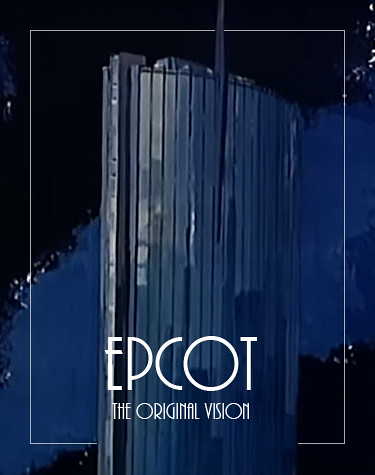
Volume XVIII, Issue Xb: Walt Disney's Urban Imagineering
The Original EPCOT Vision
Renderings and Models by Disney Imagineers
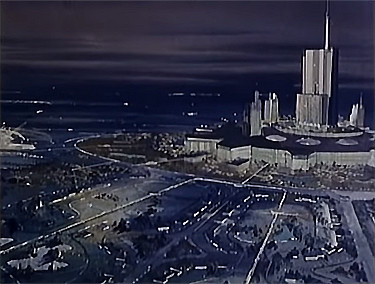
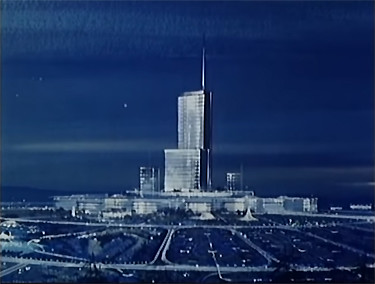
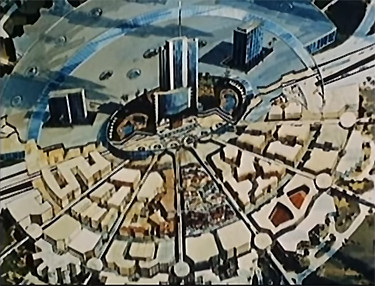
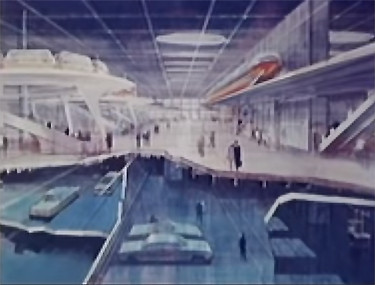
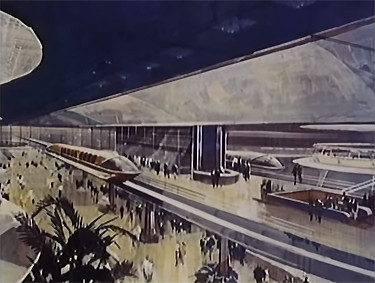
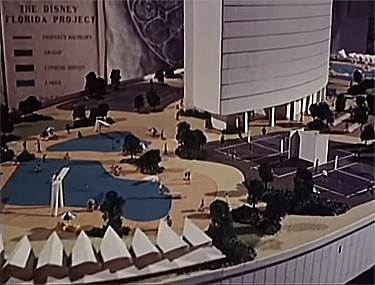
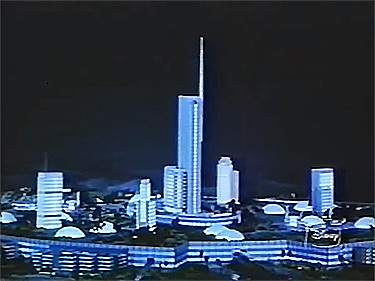
EPCOT, Would it Have Worked?
Walt Disney Imagineers a City

Walt Disney with a model of Its a Small World.
In the last years of his life, Walt Disney set out to re-imagine the way we live. He unveiled his ‘Utopia’ on television with amazing maps and renderings as he proposed to build a community of 20,000 inhabitants along with his new Magic Kingdom in Central Florida. Influenced by the work of Victor Gruen, the “father of the shopping mall,” a giant enclosed galleria would have been surrounded by fairly high density housing. But what was unusual about this city of the future is that it was actually never going to have permanent residents. Cast Members and vendors, who would already have a connection to the park. Walt intended the city – “Experimental Prototype Community of Tomorrow” to be just that. It would be a “test kitchen” of sorts for new technology. Sponsoring corporations would continually upgrade the units with their latest developments. Monorails and People Movers would provide transportation in the city itself. Private cars would be relegated to underground parking areas. Corporations associated with Disney were to have offices in the area surrounding the center galleria. Walt even planned to build an airport!
What would it have been like to live in EPCOT? It seems that it would be a somewhat surreal experience as workmen continually replaced appliances to be tested – or perhaps it would have been smaller in scale. It seems no company could afford to basically refit a 20,000 person community with the ‘latest and greatest’ technology. Austrian born Victor Gruen sought to remake the urban landscape, making it more walkable. He created the large scale shopping mall in the process and always felt some remorse for it. In the early 1960s cities were looking to replace their aging central business districts. Large cities like Baltimore built projects like the Charles Center with gleaming tall buildings and the Hamburgers Clothing Store bridging the street. Smaller cities like Charlottesville and Staunton razed blocks of old neighborhoods in anticipation of new Gruen style developments, often obliterating African American neighborhoods with long histories. Staunton’s urban renewal plan, unveiled in April of 1962, featured a Gruen style mall with acres of parking. No doubt this would have been a blow to the historic downtown had it been built.

Victor Gruen.

Victor Gruen created the modernist styled mall as a way to create pedestrian spaces for shopping.
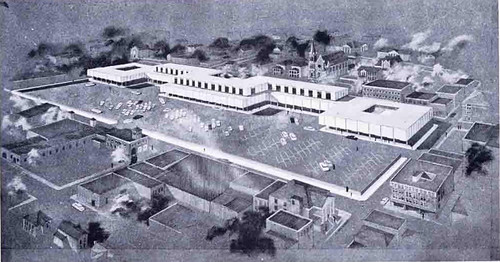
A 1962 urban renewal plan for Staunton, Virginia features a Victor Gruen style mall.
Ironically, Disney may have actually created a truer vision for American cities when he built the Main Streets of Disneyland and later the Magic Kingdom in Florida. Much more human in scale, the Main Streets presented a cleaned-up version of the old downtown streetscape and reignited a love for such places. Though they were stage sets, they may have helped people cherish what they had at home. Funded by overpriced tickets, they showed what could be accomplished by special use business districts as far as cleanliness and maintenance of the streetscapes. Walt even had an apartment for weekend use over the firehouse in Disneyland, much like the loft apartments found in renewed downtowns.
It must be noted though, that actual communities take on a life of their own. Disney originally wanted to create some innovative schools in EPCOT but decided against it as he would then find himself subject to outside governance by local school boards. After the passing of Walt Disney, his brother Roy pretty much put the brakes on any further development of the idea of EPCOT as a place people would live. EPCOT transitioned to become a permanent world’s fair. In a later development, the Disney Corporation did build the town of Celebration. With its traditional architecture and being at least in appearance a New Urbanist community, Celebration was not so much of a laboratory at all but rather an attempt to capitalize some of the vast land holdings in Florida. Celebration sold somewhat overpriced homes in the then booming Central Florida housing market. As full time residents filled the community, they understandably had differences with the corporation and there were some political battles. James Rouse and other developers were also trying to remake the American urban landscape. Rouse brought us such ideas as shared parking (to meet site requirements). Often a new building would be built in a locality and be subject to requirements that it provide a set number of spaces. As an entire area became urbanized, that would lead to an excess of spaces, particularly in a mixed-use area where the church and synagogue would need more spaces on Sunday and Saturday, but the other businesses would need more during the week. In the Village of Wilde Lake, Rouse created just such a district, allowing for a reduction in the amount of land actually needing to be paved over.
Today’s infill developments can make use of much of what has been learned in the Twentieth Century. Walt Disney has certainly had a hand in it.

Walt, Lillian and their grandchildren in the apartment above the fire house.

The firehouse.
Great Big Beautiful Tomorrow
The Futurism of Walt Disney
Index to Past Issues
Here are some extra issues we’ve created to help you weather this time of being apart. We hope you enjoy them!
Narnia Painting, Through the Wardrobe, Psalm 91
An Opportunity to Learn, Mere Christianity
Surprised by Joy, C. S. Lewis’s Childhood, Faith
The World’s Great Art Online, Van Gogh’s Faith
The Boy Who Sailed Around the World
Gleaning, Biblical Wisdom for Our Modern World
The Man Who Led Britain in Her Darkest Hour
Apollo Thirteen, The ‘Successful Failure,’ Public Art
A Spring Morning at Natural Bridge, Virginia
The Unisphere by Peter Müller-Munk at Fifty-Six
A Picture of Redemption and Resurrection
“He is Risen Indeed!” The Meaning of Miraculous
The Beauty of Bridges
Building on the Past: Poundbury
Building on the Past: Stuarts Draft
The Inventor of the Jump Shot
A Sabbath Spring
Floral Beauty for Where No Garden will Grow
The Way of Beauty
[click to read]

Main Street USA was modeled after Marceline, Missouri, Walt Disney's home town with some buildings Harper Goff lifted from Fort Collins, Colorado to create an 'idealized' American downtown.
[Click to Read]
